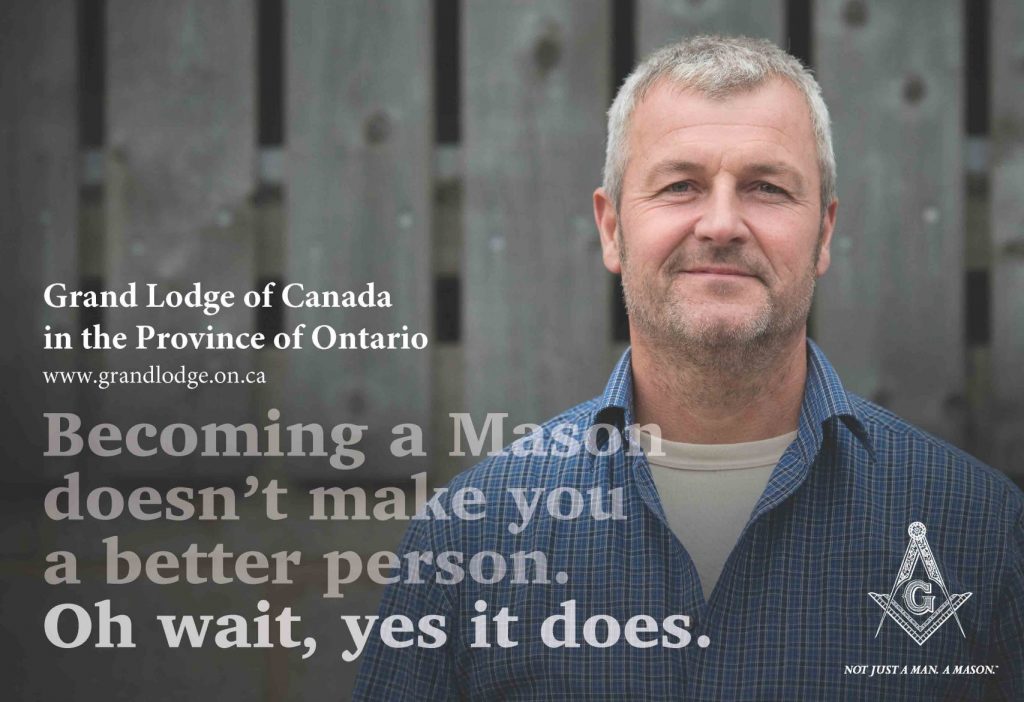Modern or speculative Masonry originated with the British stonemasons of the Middle Ages. In approximately 1350, these operative Masons began to form guilds for the practice of their trade.
Commencing in the late 1600s these Operative Lodges began to admit non-operatives. This probably had something to do with the Great Fire of London in 1666, whereby the King gave license to anyone who could shoulder a hammer.
Over the next one hundred and twenty-five years, non-operatives outnumbered operative Masons. It is repeatedly emphasized to our newer members that we are not operative, but rather Free and Accepted or Speculative Masons.
On June 24, 1717, four London Lodges met together and formed a Grand Lodge. This was the origin of the Grand Lodge of England. In 1725 a Grand Lodge was formed in Ireland and in 1736 a Grand Lodge was formed in Scotland.
The first recorded Mason in the New World was John Skene. In 1670 he is listed as a merchant
and a Mason, on the membership roll of the Lodge at Aberdeen, Scotland. John Skene came to
North America in 1682 and settled in what is now Burlington, New Jersey. He served as Deputy
Governor of East Jersey from 1685-1690.
By 1730 there were various groups of men meeting as Masons. The influx of British troops into
the New World also saw the arrival of Masonry. The soldiers brought with them traveling
Warrants; these Warrants allowed the soldiers, who were also Masons, to meet and assemble in Lodges.
In this year the Grand Master in England appointed Daniel Coxe as Provincial Grand Master of
New York, New Jersey and Pennsylvania, for a two-year term. Several local groups were given
Warrants and by the year 1736 Masonry was well established in the Colonies.
A Provincial Grand Master was appointed in Massachusetts in 1733; this Provincial Grand Lodge, operating from Boston, warranted several Lodges, which are now situated in Canada. These Lodges are situated in Annapolis, Nova Scotia – 1738, St. John’s, Newfoundland – 1738, and Halifax, Nova Scotia – 1750.
St. John’s Lodge of Friendship No. 2 met in Newark, Upper Canada, now Niagara-on-the-Lake, Ontario. This Lodge is now known as Niagara Lodge No. 2.
Our Grand Lodge has petitions for Membership dating from September 14, 1782. St. John’s Lodge is the oldest Lodge within the jurisdiction of the Grand Lodge of A. F. & A.M. of Canada in the Province of Ontario.
Time Line of Masonic History in Canada
1738 – The first Masonic lodge in the colony of Canada is constituted in Annapolis, Nova Scotia.
1755 – The Lodge of the 8th or Kings Own Regiment of Foot is issued a field warrant. This lodge brings Masonry to Niagara in the late 1700s.
1795 – The first meeting of the Provincial Grand Lodge of Upper Canada is called. Also in this year the civilian lodge in Niagara, originally called St. John’s of Friendship, is re-warranted as Lodge No. 2.
1802 – The Schismatic Grand Lodge at Niagara is formed.
1823 – The Book of Constitutions is printed in Kingston.
1855 – The Grand Lodge of Canada is formed in order to separate colonial Masons from the Mother Grand Lodge in England.
1859 – The Grand Lodges of Upper Canada and Lower Canada amalgamate.
1866 – The Grand Lodge of Nova Scotia is formed.
1867 – The Dominion of Canada is established on July 1st. Freemason Sir John A. MacDonald becomes Canada’s first prime minister. The Grand Lodge of New Brunswick is formed.
1869 – The Grand Lodge of Québec is created.
1871 – The Grand Lodge of British Columbia is formed.
1875 – The Grand Lodges of Manitoba and Prince Edward Island are founded.
1887 – The previously named Grand Lodge of Canada, located in Ontario, officially changes its name to the Grand Lodge of Ancient Free and Accepted Masons of Canada in the Province of Ontario.








